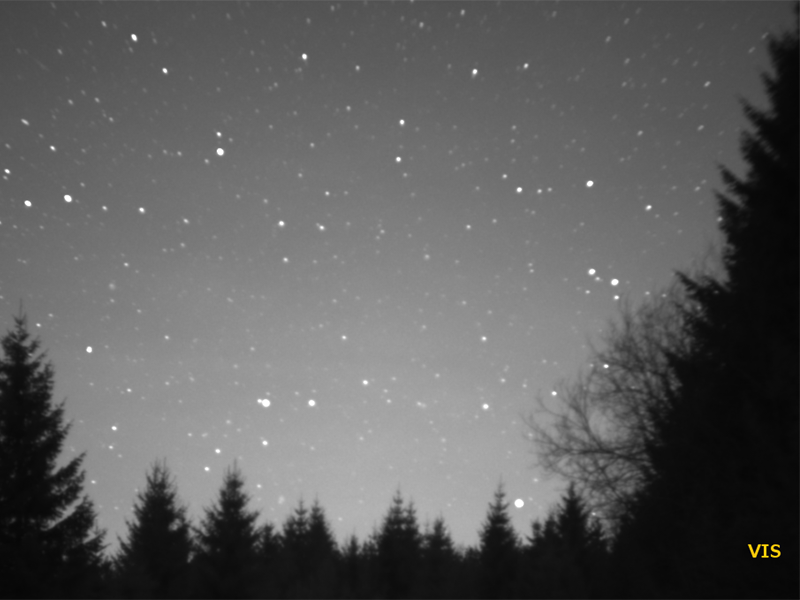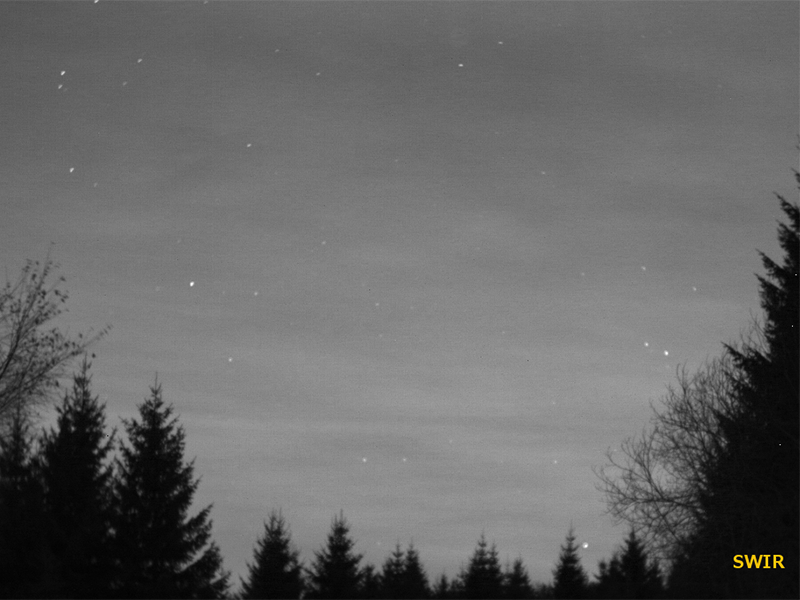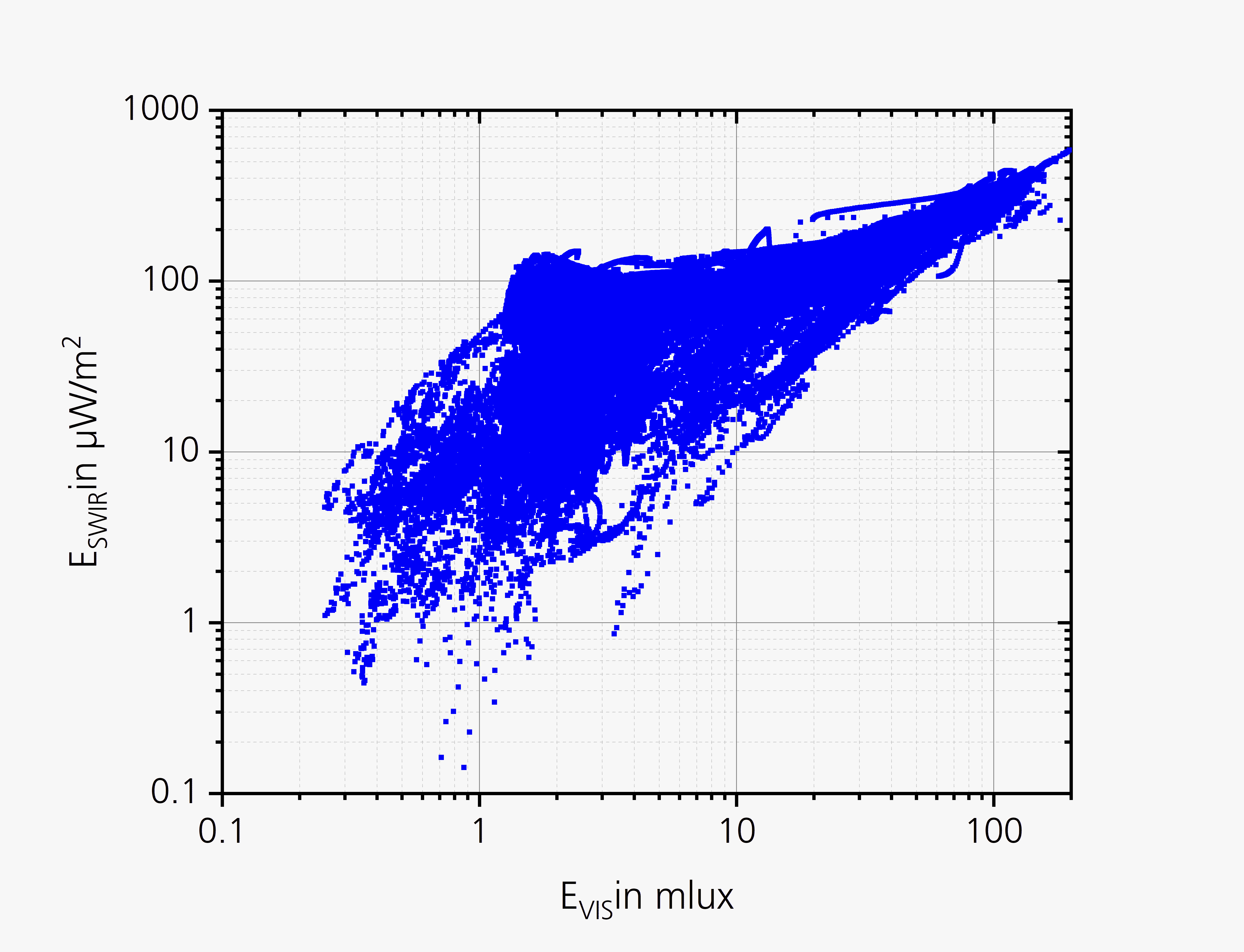For some time now, we have been investigating the extent to which sensors that are sensitive in the SWIR (shortwave infrared, 0.9 - 2.5 µm) can be used at night. Of great interest is whether they can replace or complement the camera and image intensifier systems currently in use in the visual spectral range (VIS). Until now, comparisons of cameras that are sensitive in different spectral ranges have required measurements to be taken during the night. This is costly and not always practical.



To clarify this issue, it is important to know how night illumination can be compared in the visual (illuminance EVIS in lx) and SWIR (irradiance ESWIR in W/m²). In the long term, an "illumination standard" should be established for the shortwave infrared spectral range - as it already exists in the visual for full moon, crescent moon, starry sky and overcast starry sky.
In order to be able to make statements about this, data must be collected in a first step. The main light source for the night illumination is, besides moon, planets and stars, the so called airglow, a luminous phenomenon of the upper earth atmosphere. Its nocturnal appearance is called nightglow. It can be observed in all spectral ranges from the UV to the longwave infrared. It shines particularly intensively in the SWIR between 1.4 µm and 1.8 µm. Man-made artificial lighting (e.g. street lamps, billboards) is becoming increasingly noticeable as another nocturnal light source.
Since astronomical and especially atmospheric parameters sometimes change significantly from measurement night to measurement night, VIS and SWIR illumination vary greatly and are difficult to generalize. To account for this high variability, a sufficiently large number of measurement data is necessary. To obtain this is only possible with the help of a continuous measurement over a longer period of time. Such measurements have been carried out near Storkow, Brandenburg, since fall 2019. In addition to the illumination levels, the environmental parameters (temperature, humidity, cover, precipitation, etc.) are also measured.
The adjacent graph shows a first, still preliminary result from the comparison of the illumination in the two investigated spectral ranges. A rough progression from lower left to upper right can be observed. However, the values scatter considerably. The range of the illumination in the VIS is larger than in the SWIR, which can be explained by the larger influence of the moon. As expected and confirmed by first analyses, cloud cover has a large influence on the illumination in both spectral regions. Not only the degree of cloud cover is important, but also the altitude of the clouds above the Earth's surface.
Furthermore, it is noticeable that there are only very few measured values below 1 mlux or 1 µW/m2. The reason for this is probably the artificial lighting of the surrounding locations. From there, light is scattered into the observation area and provides for overall higher measured values. This results in the so-called "light pollution" or “artificial light at night (ALAN)”. This amount of nocturnal illumination can now be observed almost worldwide.
 Fraunhofer Institute of Optronics, System Technologies and Image Exploitation IOSB
Fraunhofer Institute of Optronics, System Technologies and Image Exploitation IOSB 